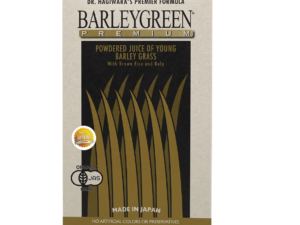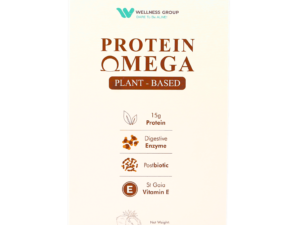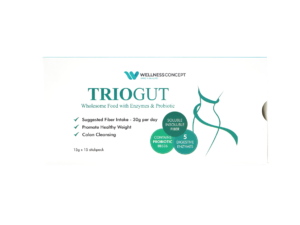Did you know that most adults consume only half the recommended daily fiber intake? Despite its importance, many people overlook this essential nutrient. Fiber plays a crucial role in keeping the digestive system healthy, yet the average intake falls far below the 25-35 grams needed daily.

The Wellness Group, a trusted name in gut health, highlights how this indigestible component supports the body. It regulates blood sugar, promotes fullness, and enhances nutrient absorption. Local favorites like brown rice and tropical fruits such as papaya make it easy to boost fiber intake.

Click to LEARN MORE
Beyond digestion, fiber fuels beneficial gut bacteria, which produce compounds vital for long-term wellness. A balanced diet rich in whole grains and fresh produce can transform health—starting from within.
Key Takeaways
- Most adults consume only 15g of fiber daily—far below the recommended 25-35g.
- Fiber supports blood sugar control, cholesterol management, and gut microbiome health.
- Brown rice and local fruits like mango are excellent Malaysian-friendly sources.
- Soluble fiber slows digestion, while insoluble fiber prevents constipation.
- Wellness Group emphasizes fiber’s role in long-term digestive and metabolic health.
What Is Fiber and Why Does It Matter?
Often called nature’s broom, fiber plays a key role in keeping the body functioning smoothly. Unlike rice or noodles, this unique carb isn’t broken into glucose. Instead, it passes through the system intact, supporting digestion and overall health.
Dietary fiber comes solely from plant sources—fruits, vegetables, and whole grains. Malaysian staples like ulam herbs and brown rice have fueled generations with their natural fiber content. “Traditional diets rich in these foods reflect an evolutionary understanding of gut wellness,” notes a local nutritionist.
Yet modern habits have shifted. Only 1 in 4 Malaysians meets daily fiber goals. This deficiency links to common complaints:
- Bloating and irregularity
- Energy crashes after meals
- Increased cravings for processed snacks
Fiber falls into two categories:
- Soluble: Dissolves in water, forming a gel to slow digestion.
- Insoluble: Adds bulk to stool, preventing constipation.
Prioritizing fiber-rich foods isn’t just about regularity—it’s a cornerstone of metabolic and gut resilience. From pisang raja to whole-grain roti, local options make boosting intake deliciously simple.
How Fiber Aids in Digestion and Absorption
Your digestive system relies on an unsung hero—dietary fiber. Acting like a *traffic warden*, it regulates the flow of food from stomach to colon, ensuring smooth digestion and optimal nutrient absorption.

- Stomach: Fiber absorbs water, slowing digestion to prolong fullness.
- Small Intestine: Soluble fiber forms a gel, trapping sugars and fats for gradual absorption.
- Colon: Insoluble fiber adds bulk, while feeding beneficial bacteria that produce vitamin K and short-chain fatty acids.
“These bacteria return the favor,” explains a Houston Methodist Hospital study. “They strengthen the immune system and reduce inflammation.”
For Malaysians, this is critical. Diets high in fried foods lack fiber, disrupting gut balance. Incorporating local favorites like oats or dragon fruit can restore digestive health effortlessly.
Ultimately, fiber isn’t just about regularity—it’s a guardian of your entire tract, from nutrient uptake to microbiome harmony.
Types of Fiber: Soluble vs. Insoluble
Not all fiber works the same way—understanding the two types unlocks better digestion. Soluble fiber dissolves in water, while insoluble fiber adds bulk. Together, they keep the gut running smoothly.
Soluble Fiber: The Cholesterol Regulator
Think of soluble fiber as a sponge. It dissolves water, forming a gel that slows digestion. This gel traps sugars and fats, helping regulate cholesterol levels.
Oats bubur is a perfect example. Its beta-glucans bind to bile acids, flushing them out. “This process lowers LDL cholesterol by up to 10%,” notes a Nutrition Society study.
- Local sources: Apples, barley, legumes.
- Bonus: Feeds gut bacteria that produce anti-inflammatory compounds.
Insoluble Fiber: Nature’s Broom
Unlike its soluble counterpart, insoluble fiber doesn’t dissolve. Instead, it scrubs the intestines like broom bristles, promoting regularity.
Malaysians get this from sambal belacan’s fibrous veggies or whole-grain nasi lemak. Contrary to myths, peanuts in nasi lemak prevent diverticulosis—they don’t cause it.
“Insoluble fiber reduces colorectal cancer risk by 40% by speeding up waste removal.”
Picture the difference: Soluble fiber is like teh tarik—thick and slow. Insoluble fiber is air kosong, pushing everything through. Both are essential for a balanced gut.
Fiber and Gut Health: Fuel for Your Microbiome
Your gut is like a thriving garden—it needs the right fuel to flourish. Fiber acts as fertilizer, feeding the gut microbiome, where 70% of immune cells reside. These bacteria thrive on fermentable fibers, producing compounds like short-chain fatty acids for overall health.
Local plant foods pair perfectly with probiotics. Tempeh’s fermented soy and tapai’s sticky rice boost bacteria diversity. For optimal results, combine them with fiber-rich ulam leaves or oats.
“Prebiotic fibers increase Bifidobacteria by 40%, strengthening gut barrier function.”
Not everyone tolerates high-fiber diets initially. Those with FODMAP sensitivity might need white rice temporarily. “Slow adjustments prevent bloating—like acclimating to chili heat,” advises a Kuala Lumpur dietitian.
| Fiber Type | Gut Benefit | Local Sources |
|---|---|---|
| Resistant starch | Feeds Faecalibacterium | Green bananas, cooled rice |
| Inulin | Boosts Bifidobacteria | Garlic, leeks |
| Beta-glucans | Reduces inflammation | Oats, barley |
Everyday Health recommends 25g daily, but sudden spikes cause discomfort. Start with small portions of kuih muih made with whole grains, gradually increasing intake over weeks.
How Much Fiber Do You Really Need?
Fiber needs vary by age, gender, and lifestyle—here’s how to hit your target. Men under 50 require 38 grams per day, while women need 25 grams. After 50, these levels drop slightly to 30g and 21g, respectively.
Malaysia’s traditional diet—rich in ulam, brown rice, and tropical fruits—naturally met these goals. Today, processed foods dominate, slashing fiber intake. For perspective, 35g equals roughly:
- 1 bowl of oats (5g)
- 2 servings of papaya (6g)
- 3 cups of stir-fried kangkung (9g)
Hydration is key. Every 5g of fiber needs a glass of water to prevent bloating. Teens and seniors may adjust amounts based on activity and tolerance.
“Gradual increases in fiber per day—paired with fluids—reduce digestive discomfort.”
Start small. Swap white rice for quinoa or add flaxseeds to porridge. These tweaks make hitting daily grams effortless and delicious.
Easy Ways to Boost Your Fiber Intake
Malaysian kitchens already hold the key to effortless fiber-rich meals. With simple swaps and clever pairings, hitting daily targets becomes delicious—not daunting.

High-Fiber Foods to Try
Local staples pack a punch. Add bran to nasi lemak rice or blend prunes into kurma drinks for sweetness and fiber. Budget-friendly picks like kacang kuda (chickpeas) outshine imported quinoa.
- Seeds: Stir chia or flaxseeds into teh tarik or oatmeal.
- Legumes: Roast chickpeas for a crunchy snack.
- Vegetables: Pre-cut ulam for quick stir-fries.
“Whole grains like brown rice reduce constipation risks by 30% compared to refined versions.”
Smart Meal Planning Tips
Start small. Swap white bread for whole-grain roti or add lentils to soups. Time-saving hacks:
- Batch-cook barley for weekday porridge.
- Keep roasted almonds handy for snacks.
- Mix grated carrots into minced meat dishes.
Psyllium husk supplements help but shouldn’t replace cendol’s real fruits. For more ideas, explore creative fiber-boosting strategies.
Conclusion
Small changes today can transform your gut health tomorrow. Start with one roti wholemeal daily or swap white rice for quinoa. These tweaks add fiber without disrupting favorite meals like laksa.
The Wellness Group helps tailor plans for busy lifestyles. Their nutritionists craft strategies that fit local tastes, ensuring sustainable progress.
Ready to begin? WhatsApp them at +60123822655. They’re available Mon–Fri (9:30am–6:30pm) and Sat–Sun (10am–5pm).
Your microbiome thrives on consistency—feed it well now for lasting health.
FAQ
What’s the difference between soluble and insoluble fiber?
Soluble fiber dissolves in water, forming a gel-like substance that helps regulate blood sugar and cholesterol. Insoluble fiber adds bulk to stool, promoting regularity and preventing constipation.
How does fiber support gut health?
It feeds beneficial gut bacteria, which produce short-chain fatty acids. These compounds strengthen the gut lining and reduce inflammation.
What are the best sources of dietary fiber?
Whole grains, legumes, fruits, vegetables, nuts, and seeds are excellent choices. Oats, lentils, apples, and broccoli are particularly rich in fiber.
How much fiber should someone consume daily?
The recommended intake is 25–38 grams per day, depending on age and gender. Most people fall short, so gradual increases help avoid bloating.
Can fiber help with weight management?
Yes! High-fiber foods keep you full longer, reducing overeating. They also slow digestion, stabilizing blood sugar levels.
Does cooking affect fiber content in foods?
Some methods, like boiling, may reduce soluble fiber slightly. However, most plant-based foods retain their fiber content when cooked properly.
Are fiber supplements as effective as whole foods?
While supplements can help, whole foods provide additional nutrients like vitamins and antioxidants. A balanced diet is always the best approach.






